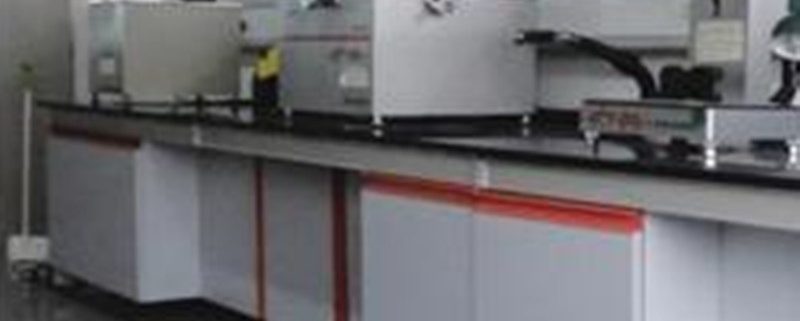What are the surface inspections of casting products?
1. Liquid penetration testing
Liquid penetration testing is used to inspect various opening defects on the surface of castings, such as surface cracks, surface pinholes and other defects that are difficult to find with the naked eye. Commonly used penetrant detection is color detection, which is to wet or spray a colored (usually red) liquid (penetrant) with high penetrating ability on the surface of the casting. The penetrant penetrates into the opening defect and quickly wipes off the surface penetrant. Then spray the easy-drying display agent (also called developer) on the surface of the casting. After the penetrant remaining in the opening defect is sucked out, the display agent is dyed, which can reflect the shape and shape of the defect. Size and distribution. It should be pointed out that the accuracy of penetrant detection decreases with the increase of the surface roughness of the tested material, that is, the lighter the surface, the better the detection effect, and the surface detection accuracy of the grinding machine is the best, and even intercrystalline cracks can be detected. In addition to color detection, fluorescent penetrant detection is also a commonly used liquid penetrant detection method. It needs to be equipped with ultraviolet light for irradiation observation, and the detection sensitivity is higher than that of color detection.
2. Eddy current testing
It is suitable for checking the defects below the surface which are generally not more than 6-7mm deep. There are two types of eddy current testing: the placement coil method and the through coil method. When the test piece is placed near a coil with alternating current, the alternating magnetic field entering the test piece can induce a current (eddy current) flowing in an eddy current direction perpendicular to the excitation magnetic field in the test piece. The eddy current will Generate a magnetic field opposite to the direction of the exciting magnetic field, so that the original magnetic field in the coil is partially reduced, which causes the change of the coil impedance. If there are defects on the surface of the casting, the electrical characteristics of the eddy current will be distorted, thereby detecting the existence of the defect. The main disadvantage of eddy current testing is that the size and shape of the detected defect cannot be displayed visually. Generally, only the surface position and depth of the defect can be determined. In addition, it is not as sensitive as penetrant detection for detecting small opening defects on the surface of the workpiece.
3. Magnetic particle testing
It is suitable for detecting surface defects and defects several millimeters deep below the surface. It requires DC (or AC) magnetization equipment and magnetic powder (or magnetic suspension) to perform detection operations. Magnetizing equipment is used to generate a magnetic field on the inner and outer surfaces of the casting, and magnetic powder or magnetic suspension is used to display defects. When a magnetic field is generated within a certain range of the casting, the defects in the magnetized area will produce a leakage magnetic field. When the magnetic powder or suspension is sprinkled, the magnetic powder is attracted, so that defects can be displayed. The defects displayed in this way are basically defects that cross the lines of magnetic force, but they cannot be displayed for long-length defects parallel to the lines of magnetic force. For this reason, the magnetization direction needs to be constantly changed during operation to ensure that various defects in unknown directions can be detected. .
4. Radiographic testing
Generally, X-rays or γ-rays are used as the radiation source, so equipment and other ancillary facilities are needed to generate radiation. When the workpiece is exposed to the radiation field, the radiation intensity of the radiation will be affected by the internal defects of the casting. The intensity of the radiation emitted through the casting varies locally with the size and nature of the defect, forming a radiographic image of the defect, which is developed and recorded by radiographic film, or real-time detection and observation through a fluorescent screen, or detection by a radiation counter.
5. Ultrasonic testing
It is used to check internal defects. It uses sound beams with high-frequency sound energy to propagate inside the casting. When it encounters internal surfaces or defects, it reflects and finds defects. The magnitude of the reflected sound energy is a function of the directivity and properties of the inner surface or defect and the acoustic impedance of this reflector. Therefore, various defects or the sound energy reflected by the inner surface can be used to detect the location, wall thickness or surface of the defect The depth of the next defect. Ultrasonic testing, as a widely used non-destructive testing method, has its main advantages in: high detection sensitivity, which can detect small cracks; and large penetration capability, which can detect thick section castings. Its main limitation lies in: it is difficult to explain the reflection waveform of the disconnected defect with complex outline size and poor directivity; for undesirable internal structure, such as grain size, structure, porosity, inclusion content or fine dispersion Precipitates, etc., also hinder the interpretation of the waveform; in addition, the standard test block should be referenced when testing.
Decho is a professional supplier on casting products , if you have any request , pls feel free to contact us by email [email protected]




